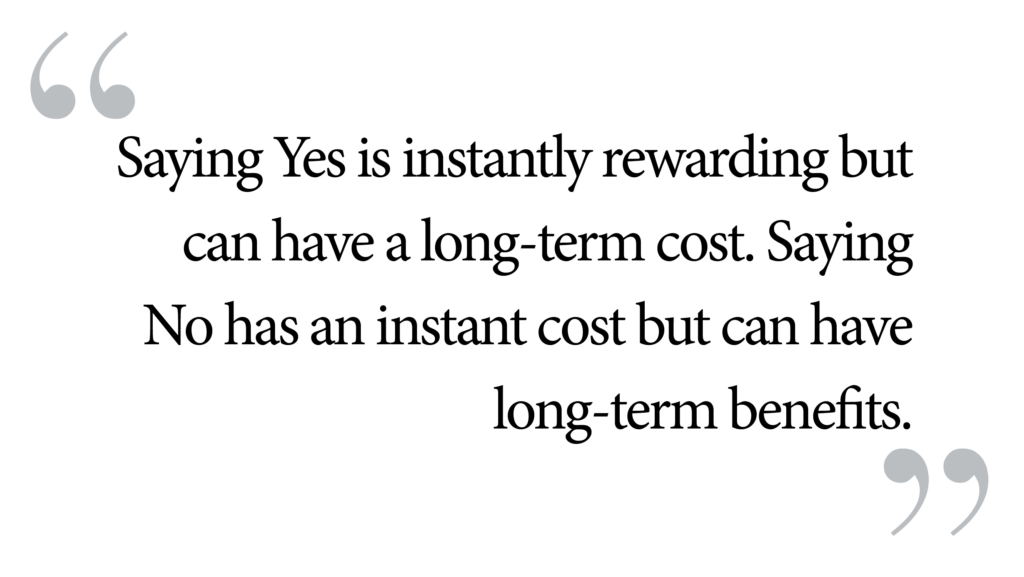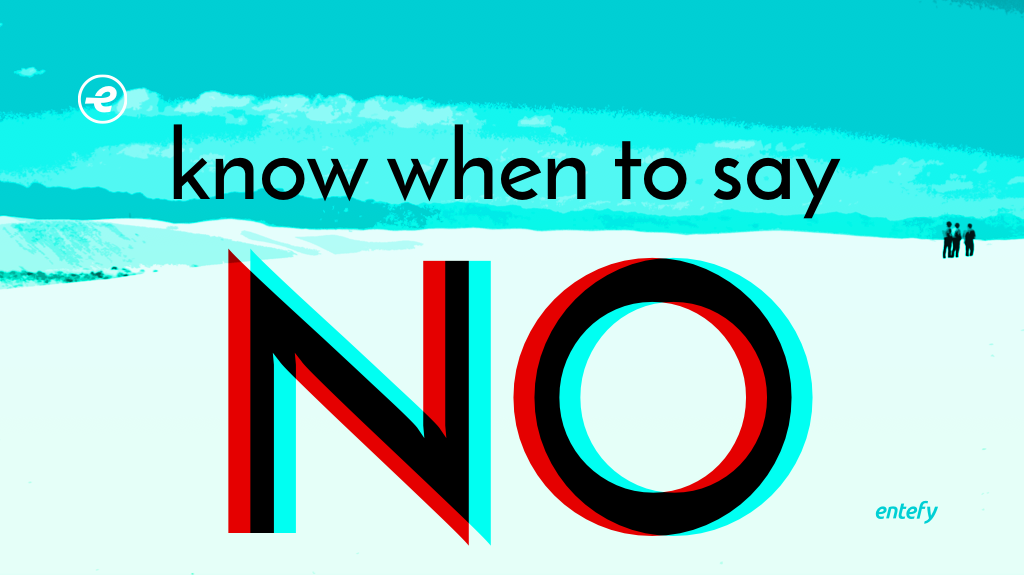Getting to Yes is a very old idea. We’ve all said something like, “Let’s find some common ground where we can both be successful.” This social inclination to collaborate is a shared strength, but it comes with all sorts of potential challenges. Just as the Internet has flooded us with information, constant connectedness has opened us up to over-scheduling and over-commitment. We want to participate—but when and how should we be involved?
Think about daily life 25 years ago: Wake up, make coffee, drive to work, talk to your boss, call a customer, grab lunch, meet a colleague, make some notes, file some papers, drive home, dinner with family, watch a sitcom, go to bed. In the morning, rinse and repeat.
Think about daily life today: Wake up, make coffee, check email, delete some emails, respond to other emails, check texts, scan your social feeds, like a post or two… or 30, read your news feeds, open an app, close an app, share a selfie of you and your cat, message your family abroad… And that’s just the first hour of the day in this hyper-connected world.
Demands on our time are, for practical purposes, infinite. Yet time is limited. No is your front-line weapon in the constant struggle against overload. No lets you set boundaries and define your limits. No is how you can maintain focus in the moment, and conserve the time you need to keep moving forward towards your personal goals.
What happens when you’re told No? The word carries power in our lives beginning in early childhood, where our specific experiences being prohibited from doing something influences the formation of our neurobiology and the long-term development of emotion regulation and social skills. In fact, No produces specific and measurable brain responses, independent of the context. In past studies it was shown that “no was negatively valenced, produced slower response times, and evoked a negative signal in the right lateral orbitofrontal cortex (OFC).”
This helps explain why we don’t say No more often. There are risks and costs associated with saying No. Partnerships threatened, colleagues frustrated, plans undermined, bosses puzzled, customers disappointed. Saying Yes is instantly rewarding but can have a long-term cost. Saying No has an instant cost but can have long-term benefits.

The discipline of constructively saying No is rarely taught in people’s lives and careers. Sometimes you pick it up from mentors, sometimes you can observe and mimic the behavior in individuals you admire, occasionally you come across a book or article. Saying No is an important skill, and it is worth calling attention to it much more explicitly than we usually do.
We’ve all experienced times when saying No was difficult. No closes the door in the requester’s face, and they’re unlikely to appreciate that. Steeling yourself for a No can take practice and preparation. There’s the fear of conflict. Not wanting to disappoint. Then there’s the desire to please. Because rarely does No lead to smiles and thanks. Research shows that processing No responses requires more effort than Yes responses, reflecting a fundamental human bias towards cooperation.
Integrity requires us to say No when a Yes would lead to over-complication, overload, and the potential to under-deliver on commitments. So the next time you’re invited to two events on the same day and think “maybe I can make that work,” remember that the power of No is on your side.
